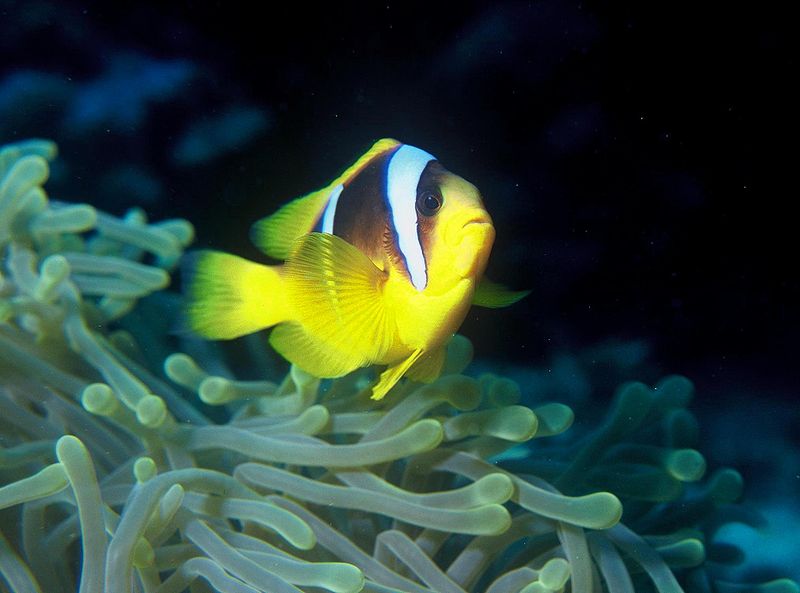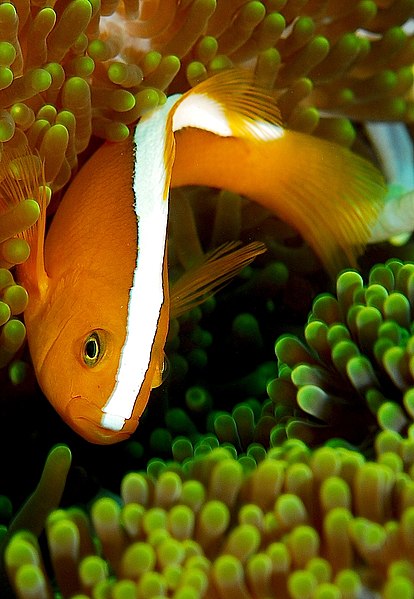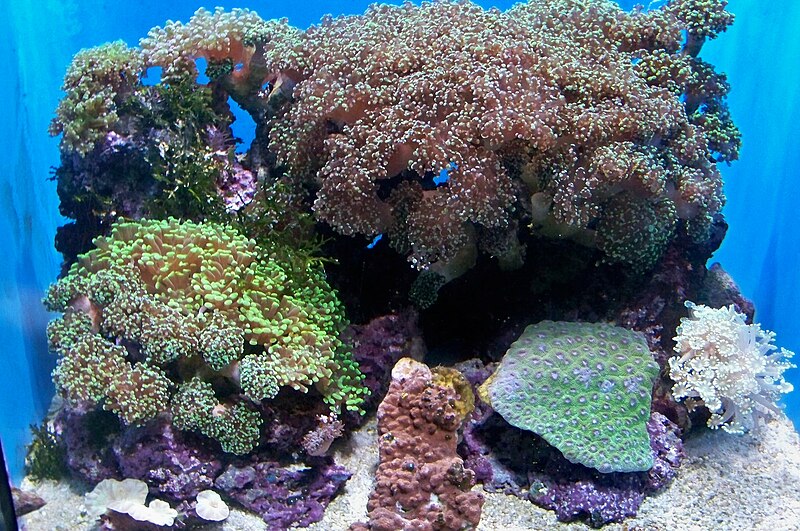Hello, Frank Indiviglio here. Damselfishes and Clownfishes are closely related, with all 325+ species being classified in the Family Pomacentridae. Among the most numerous and conspicuous fish on tropical coral reefs, a number make hardy marine aquarium inhabitants.
Range and Habitat
Damselfishes and Clownfishes are found throughout the world’s tropical and semitropical seas, with the greatest diversity occurring in the Indo-Pacific Region, especially off Australia; relatively few occur in the Atlantic and Eastern Pacific Oceans. They occupy a startling variety of habitats, with many species restricted to specific depths or specific areas of wave action. Several species can even enter brackish waters.
few occur in the Atlantic and Eastern Pacific Oceans. They occupy a startling variety of habitats, with many species restricted to specific depths or specific areas of wave action. Several species can even enter brackish waters.
Identification in both the wild and pet trade is sometimes difficult, as their colors often vary from individual to individual; different populations of the same species may also exhibit unique color patterns.
Clownfishes and Sea Anemones
Clownfishes (aka anemonefishes) are well-known for their habit of living in close association with an invertebrate that is also an aquarium favorite, the sea anemone. Usually home to just one pair of clown fish, the host anemone forms the basis of their territory, and they rarely stray far from it.
Surviving Among Deadly Tentacles
Clownfishes were long thought to be immune to the anemone’s stinging tentacles, as they shelter right among them without being harmed (other small fishes would be killed if they attempted to do this). We now know, however, that the clownfish’s secret is not immunity at all, but an even more amazing adaptation.
 Anemone tentacles fire their sting-bearing cells (nematocysts) upon contact with any organism that they come in contact with. The tentacles are coated with mucus which inhibits them from stinging one another. It seems that the clownfish secretes mucus which mimics that covering the tentacles of the anemone. Therefore, the anemone simply does not recognize the clownfish as prey, or even as a distinct organism!
Anemone tentacles fire their sting-bearing cells (nematocysts) upon contact with any organism that they come in contact with. The tentacles are coated with mucus which inhibits them from stinging one another. It seems that the clownfish secretes mucus which mimics that covering the tentacles of the anemone. Therefore, the anemone simply does not recognize the clownfish as prey, or even as a distinct organism!
In return for the protection offered by its host, the clownfish consumes parasites that might harm the anemone. By swimming about and fanning its fins, the clownfish may also increase the flow of oxygenated water through the anemone’s tentacles and about its base.
Do Anemones and Clownfishes “Need” One Another?
Aquarists often question whether clownfishes and anemones can survive without one other. It appears that the relationship might the best be described as “commensal”. By this we mean that each derives benefits from living in close association with the other, but they are not strictly limited to that situation.
The vast majority of anemones live without clownfishes. Clownfishes, however, seem somewhat more dependent upon the relationship. While they will live quite well “on their own” in the aquarium, experiments in the wild have shown that clownfishes without anemone hosts are quickly eaten by larger fishes.
Further Reading
The Florida Museum of Natural History has posted an interesting article and video on clownfishes here.
Next time we’ll take a closer look at the damselfishes and a favorite aquarium clownfish.
Please write in with your questions and comments.
Thanks, until next time,
Frank Indiviglio
Amphiprion sandaracinos image referenced from wikipedia and originally posted by Bricktop
 That Fish Blog – Aquarium Advice and Information
That Fish Blog – Aquarium Advice and Information

 technology who manufactures their light bulbs in Germany, so you can be confident in the quality control and workmanship of their products.
technology who manufactures their light bulbs in Germany, so you can be confident in the quality control and workmanship of their products.
 water plankton as well. Just bear in mind that fresh water creatures will perish rapidly in salt water, so don’t overload your tank.
water plankton as well. Just bear in mind that fresh water creatures will perish rapidly in salt water, so don’t overload your tank. Until recently, corals were considered nearly impossible to keep in home aquariums. Water quality is exceedingly important, as is the wavelength and intensity of the lighting provided. Many corals obtain much of their food via the action of the symbiotic algae which live within them. Without proper lighting, the algae perish…additional food provided thereafter cannot keep the coral alive. Fortunately, a variety of commercially available
Until recently, corals were considered nearly impossible to keep in home aquariums. Water quality is exceedingly important, as is the wavelength and intensity of the lighting provided. Many corals obtain much of their food via the action of the symbiotic algae which live within them. Without proper lighting, the algae perish…additional food provided thereafter cannot keep the coral alive. Fortunately, a variety of commercially available 